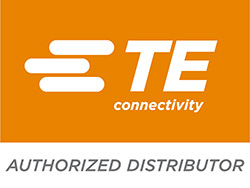TE Connectivity PCJ Series Electromechanical Interface Relay, PCB Mount
- RS Stock No.:
- 468-219
- Mfr. Part No.:
- 1-1721142-9
- Brand:
- TE Connectivity

Subtotal (1 tray of 120 units)*
£145.37
(exc. VAT)
£174.44
(inc. VAT)
FREE delivery for orders over £50.00
In Stock
- 2 unit(s) ready to ship from another location
Need more? Click ‘Check delivery dates’ to find extra stock and lead times.
Tray(s) | Per Tray | Per unit* |
|---|---|---|
| 1 + | £145.37 | £1.211 |
*price indicative
- RS Stock No.:
- 468-219
- Mfr. Part No.:
- 1-1721142-9
- Brand:
- TE Connectivity
Specifications
Technical Reference
Legislation and Compliance
Product Details
Find similar products by selecting one or more attributes.
Select all | Attribute | Value |
|---|---|---|
| Brand | TE Connectivity | |
| Mounting Type | PCB Mount | |
| Series | PCJ | |
Select all | ||
|---|---|---|
Brand TE Connectivity | ||
Mounting Type PCB Mount | ||
Series PCJ | ||
- COO (Country of Origin):
- CN
The TE Connectivity General-purpose relay from the PCJ series, designed for industrial applications. It features a SPST-NO (Single Pole Single Throw - Normally Open) contact arrangement, operates with a 12 VDC coil voltage, and has a 3A current rating. This relay is suitable for reliable switching tasks in various demanding environments.
Compliant with EU RoHS and ELV directives for safety and sustainability
Does not contain any harmful REACH SVHC materials ensuring environmental safety
Features a robust design that caters to diverse electrical applications
Accompanied by extensive compliance documentation for peace of mind
Compatibility with various systems enhances versatility and usability
Designed for efficiency contributing to reduced failure rates in applications
Does not contain any harmful REACH SVHC materials ensuring environmental safety
Features a robust design that caters to diverse electrical applications
Accompanied by extensive compliance documentation for peace of mind
Compatibility with various systems enhances versatility and usability
Designed for efficiency contributing to reduced failure rates in applications
